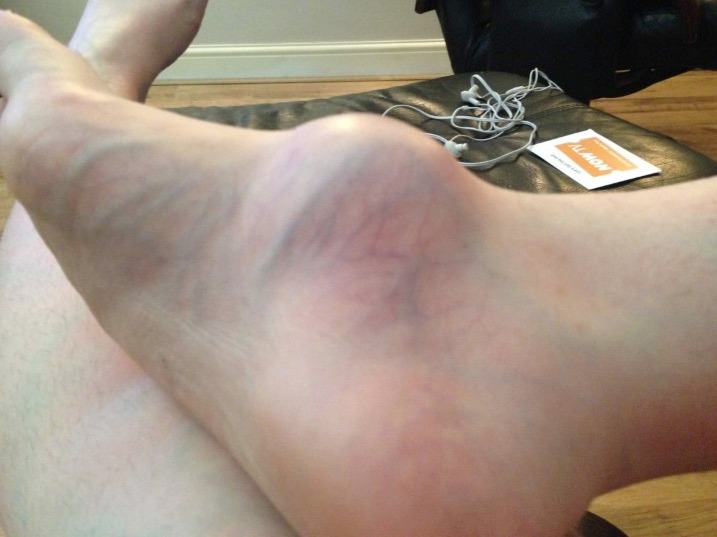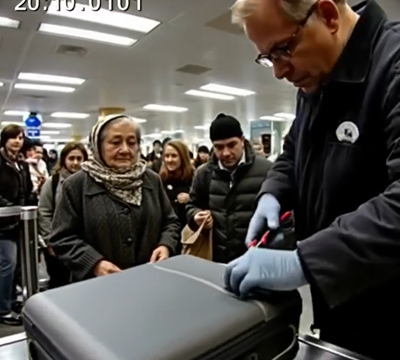For over a decade, Cheryl Murray lived with a growing, painful lump on her foot—something she tried to keep hidden from everyone, even the man she loved. It wasn’t until she moved in with her partner, David, that her long-held secret was finally exposed, leading to a life-changing diagnosis.

What Cheryl initially believed was a minor injury turned out to be something far more dangerous: cancer. Cheryl, a woman from Glasgow, Scotland, first noticed the strange lump on her foot at the age of 15. Though it caused her some discomfort, she didn’t think it was serious. When she visited a doctor, they suggested it might be a torn ligament, perhaps caused by a fall she’d experienced, and advised physiotherapy. She followed their recommendations and carried on with life, never suspecting that the issue could be something more severe. Over the next ten years, however, the lump continued to grow.
With each accidental bump or nudge, the pain intensified. Eventually, the lump expanded to the size of a golf ball. But despite the ongoing discomfort, Cheryl was too embarrassed to speak up. When she started dating David, she chose to keep the condition to herself, hiding the swelling and her growing concern. “I was ashamed of it,” Cheryl admitted in an interview with the Daily Mail. That shame held her back from seeking additional medical advice, even as the lump became more pronounced and painful. Everything changed when she and David moved in together. One day, he noticed her foot and asked what was wrong. Cheryl repeated the explanation she had been given years ago—that it was torn ligaments—but David could tell it was something more serious.

He urged her to see a doctor again, and this time, Cheryl listened. That decision turned out to be critical. Upon visiting the doctor, she was immediately sent for an MRI, an X-ray, and multiple biopsies. The results came back with devastating news: the lump was not a torn ligament, but an aggressive form of cancer known as sarcoma. Her doctors informed her that to prevent the cancer from spreading, they would need to amputate her lower leg. Cheryl was blindsided. “I was hysterical. I was so stunned I couldn’t speak,” she recalled. “I felt like I had been punched in the face twice on one day.”
Through the terrifying whirlwind of tests and decisions, David never left her side. In fact, just weeks before her scheduled amputation, he proposed. Cheryl says that David’s love and support gave her the motivation and strength to face what was ahead. “He provided me motivation and the willpower to continue,” she said. Sarcoma is a rare type of cancer that develops in the body’s connective tissues, including muscles, fat, blood vessels, tendons, and nerves. While it can occur anywhere, it most often affects the limbs. According to the Cleveland Clinic, the causes of sarcoma are still not fully understood, although it is more common in adults and those who have previously undergone radiation or chemotherapy for other cancers. Common types of sarcoma include osteosarcoma, which affects the bones; chondrosarcoma, which begins in cartilage; and Ewing’s sarcoma, which typically originates in the bone marrow. Because sarcoma often presents with vague symptoms like swelling, pain, or a noticeable lump, it can be difficult to diagnose early. Cheryl’s story serves as a sobering reminder that when something feels off with your body, it’s crucial not to ignore it. Persistent swelling, chronic localized pain, or unusual lumps should always be taken seriously. Cheryl acknowledges that had she continued to hide the lump or ignore it, the outcome could have been much worse. “If I hadn’t shown him the lump, I probably would’ve ignored it even longer,” she said. Her story is a powerful message to others: trust your instincts, listen to your body, and don’t let embarrassment or fear prevent you from getting answers. If something doesn’t feel right and you don’t feel satisfied with the first explanation, keep asking questions. It might just save your life. Share Cheryl’s journey with someone you care about—you never know who might need to hear it.





